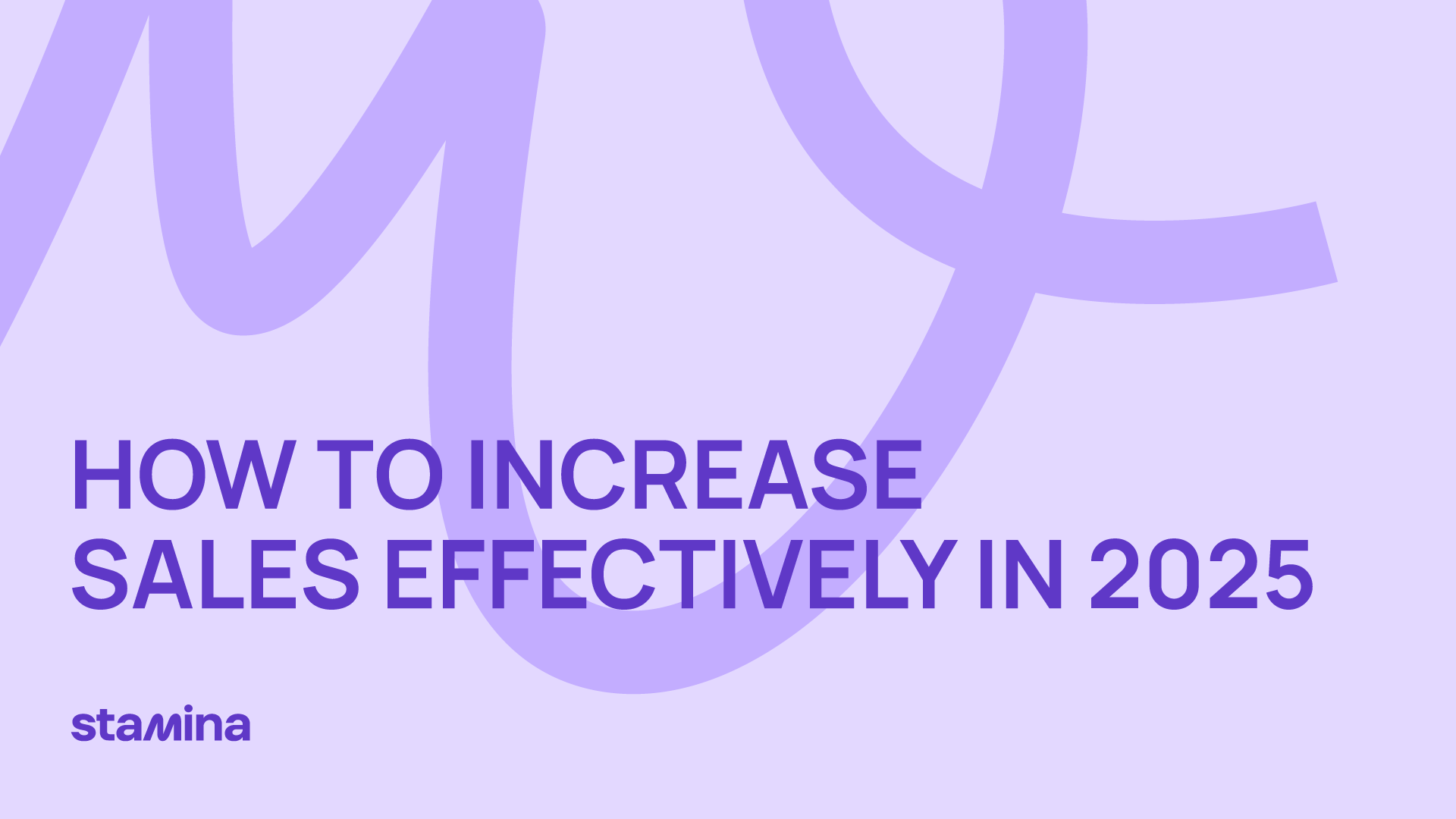How to Increase Sales Effectively in 2025: Data-Driven Strategies That Work

Sales teams today face increasing pressure: According to Gartner, a staggering 67% of sales reps are projected to miss their quotas in 2025.
With buyer expectations shifting and AI tools reshaping the landscape, businesses must modernize their approach to stay competitive. The key is no longer just generating leads, it’s converting them into loyal customers and creating a revenue engine that fuels long-term success.
Let’s explore practical, expert-backed strategies that help increase your sales, scale efficiently, and build lasting customer relationships.
Why It Pays to Prioritize Sales Growth
Growing your sales isn’t just about revenue; it’s about resilience and expansion. Increased sales mean:
-
More funding for product innovation.
-
Resources to hire and retain top talent.
-
Enhanced capacity to serve and keep customers.
-
The ability to scale operations and enter new markets.
According to McKinsey, companies that invest in advanced sales capabilities can outperform competitors by 30–50% in revenue growth. In short, sustainable sales growth directly fuels long-term business health.
1. Set Strategic, Data-Informed Sales Goals
Great goals start with great data. Setting arbitrary targets without analysis can demotivate your team and hurt performance. Here’s how to set better goals in 2025:
Use the S.M.A.R.T. Framework:
-
Specific: “Increase upsell revenue by 15%” > “Grow revenue”
-
Measurable: Use CRM dashboards to track every goal in real time
-
Achievable: Goals should stretch, not stress
-
Relevant: Tie directly to business outcomes (e.g., profit margin, customer retention)
-
Time-bound: Set monthly or quarterly check-ins
Use CRM platforms like HubSpot or Pipedrive to:
-
Analyze past performance by product, rep, or region
-
Adjust goals dynamically based on seasonality or market shifts
-
Balance activity KPIs (like meetings booked) with outcome KPIs (like deal closure rates)
2. Personalize Your Value Proposition
Generic pitches no longer cut it. To increase sales, tailor your value proposition by:
-
Focusing on outcomes, not features (“Save 10 hours/week” > “Now with AI”)
-
Differentiating clearly from competitors (unique use cases, pricing models, or support)
-
Speaking your customer's language: mirror the tone and terminology found in their industry
-
Proving value with metrics, testimonials, and social proof
3. Know Your Customers Inside and Out
Great sales begin with a solid understanding of customers. Here's how to deepen that understanding:
-
Use tools like Gong.io or Chorus.ai to analyze call transcripts for recurring objections and themes.
-
Conduct regular customer interviews to explore their motivations for buying and staying.
-
Monitor LinkedIn, Reddit, and industry-specific forums for organic conversations.
-
Read the same materials as your customers: newsletters, blogs, and LinkedIn posts from thought leaders in their fields.
4. Optimize Every Stage of the Sales Funnel
Your sales funnel isn’t just a visual; it's a system. Each stage requires its own strategy.
Awareness
Goal: Attract potential buyers.
Tactics:
-
SEO-optimized blog posts.
-
LinkedIn content and videos.
-
Industry webinars.
-
Guest podcast appearances.
Interest
Goal: Educate and nurture leads.
Tactics:
-
Lead magnets (eBooks, white papers).
-
Drip campaigns based on behavior.
-
Retargeted ads.
Decision
Goal: Address objections and close
Tactics:
-
Free trials or live demos
-
ROI calculators
-
Use cases and comparison tables
-
Customer success stories
Action
Goal: Close the sale
Tactics:
-
Time-sensitive promotions or discounts
-
Simplified contracts and e-signatures
-
1-click onboarding or guided setup
Metrics to track:
-
Conversion rates at each stage
-
Funnel velocity (time between stages)
-
Drop-off points (e.g., interest → decision)
5. Use AI to Increase Sales Productivity
AI isn’t replacing reps, it’s making them more effective. From lead scoring to email generation, tools like Outreach.io and Apollo offer:
-
Predictive analytics to prioritize high-value prospects
-
Real-time coaching based on rep performance
-
Automated email outreach that still feels personalized
A recent Harvard Business Review study found that reps who use AI-assisted sales tools close deals up to 30% faster than those who don’t.
6. Train and Retain Your Sales Team
No matter how effective your tools are, sales success begins with people. Yet, 42% of reps report that they lack training to meet their quota.
Key strategies:
-
Use bite-sized video modules for ongoing training
-
Implement a sales playbook that’s updated quarterly
-
Encourage peer learning: Allow your top performers to coach new hires
-
Employ gamification to reward behaviors (not just results)
Grow With Purpose
Sales growth in 2025 goes beyond numbers. It emphasizes building trust, acting on insights, and delivering consistent value. By aligning your strategy with buyers' wants and needs, your team will sell more effectively and intelligently.
Subscribe to our Newsletter














